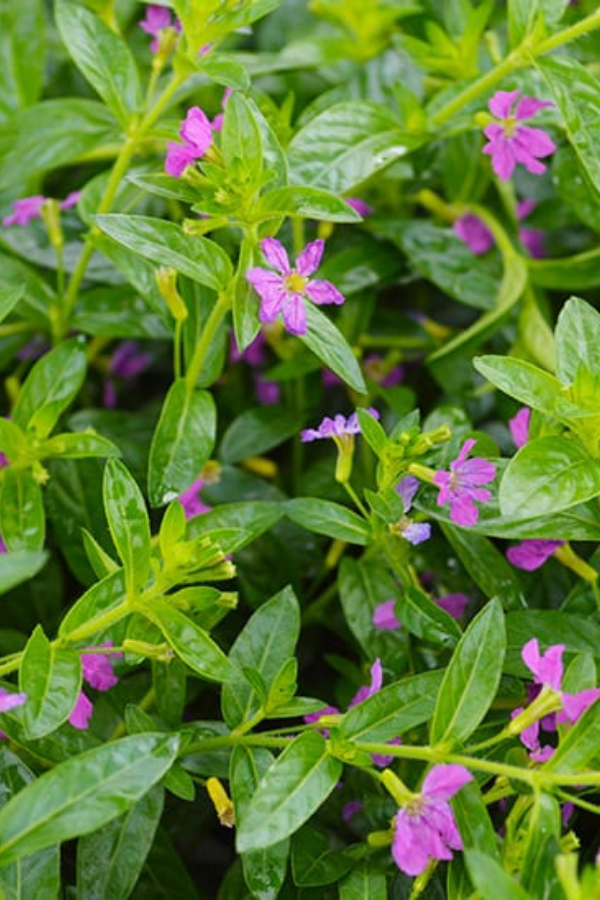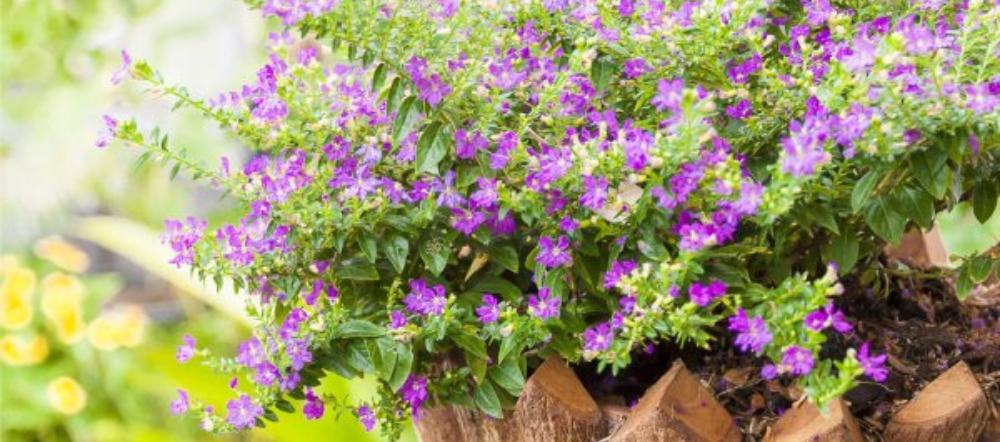With beautiful purple flowers and many small shoots of green foliage, Mexican heather is a great addition to your garden.
First, let’s learn a little more about Mexican heather.
What is Mexican heather?
Mexican heather is a shrub-like ground cover with bright green leaves and small flowers, normally of a pink, white, or lavender color.
Mexican heather originated from Central American climates, so it grows great in warmer weather. For areas that have cold winters like Pennsylvania, Mexican heather can be planted as an annual.
Mexican heather goes by a bunch of names, including:
- False heather
- Hawaiian heather
- Elfin Herb
- Cuphea hyssopifolia
No matter what you call your Mexican heather plants, its growing requirements will be the same. See below for information on how to care for your Mexican heather.
Caring for your Mexican heather
Whether you are growing Mexican heather as a perennial or an annual, the plant is accustomed to certain growing conditions that should be considered.
Sunlight requirement
Given their warmer weather climate origin, Mexican heather is going to grow the best with part to full sun. Generally, this means the Mexican heather will grow best with 4 to 8 hours of direct sunlight.
Mexican Heather temperature needs
Mexican heather can handle temperatures as low as 50 degrees, so be careful about planting them outside in the spring — they may not handle a cold snap very well.
Mexican heather can be grown all over the United States, but since it can’t survive freezing temperatures, these plants are grown as an annual in most states.
For southern states in growing zones 8 through 11, Mexican heather may be able to grow all through the winter. It grows great in PA’s growing zone.
Mexican heather care: height and spread of plants
In landscape planting, Mexican heather can grow as wide and high as 2 feet.
For smaller areas, such as container gardening or a window box, Mexican heather will normally fill in the area you provide it with. Because of this, Mexican heather acts great as a filler for pots.

Soil type for the best Mexican heather care
Mexican heather grows best in well-drained soil, especially if it has a sandy texture. Like most plants, it’s best if the soil is nutrient-rich, preferably with a mixture of sand, clay, and humus.
Mexican heather fertilizer needs
Feed your plant by building up your soil and/or planting your Mexican heather with a slow-release fertilizer.
Water-soluble plant food can also be used to feed Mexican heather its nutrients.
How often you fertilize your Mexican heather depends on how often you are watering it — for the hot months when you are watering your Mexican heather almost every day, it’s important to fertilize the plant multiple times a week. A good rule of thumb is about once every third watering.
Disease and pest control
Mexican heather typically don’t have problems with serious pests, but some more common pests that may feast on your plant are:
- Spider mites
- Aphids
- Thrips
- Scales
- Mealybugs
Most of these can be controlled with a soapy or oily spray or even spraying them off with your hose.
Pruning Mexican heather
For Mexican heather that is being grown as an annual, pruning isn’t much of a factor. Of course, if the plant is getting straggly, it may be healthy for it to be cut back from time to time.
Conclusion
Mexican heather is a great annual to grow in PA’s climate. Their beautiful foliage, tiny flowers, and bushy growing make them a great addition to landscapes or containers.

